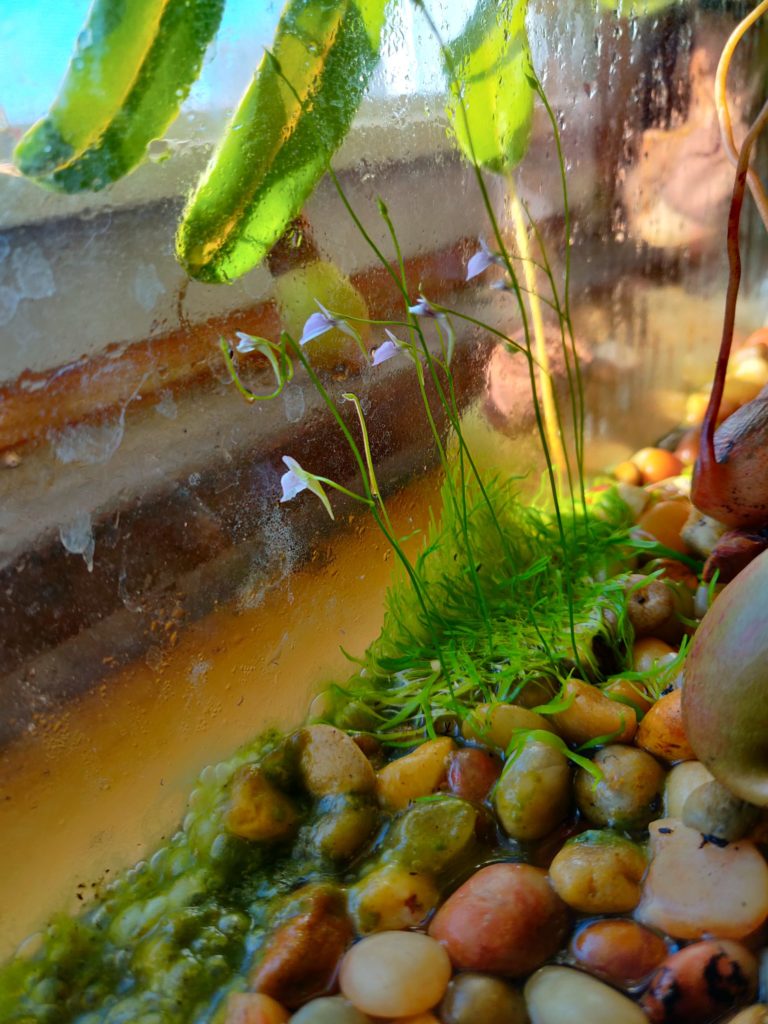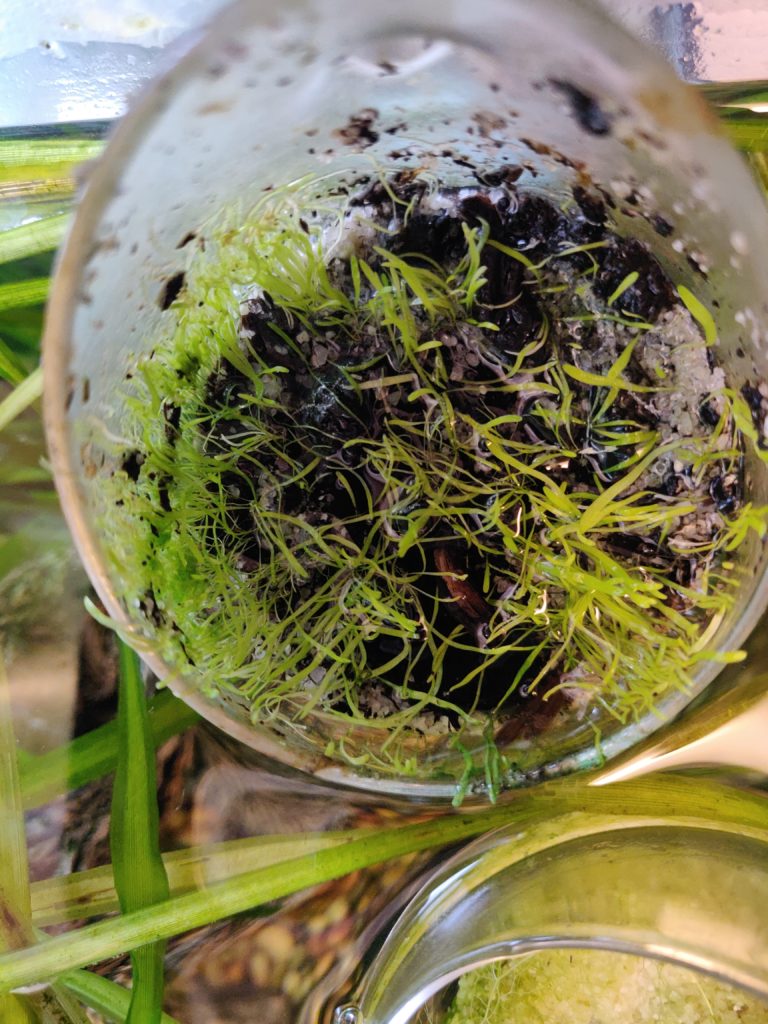Utricularia graminifolia (UG) is a popular foreground plant for planted aquariums, with grass-like leaves that eventually form a lush green carpet over the substrate. It is considered anywhere between easy and impossible to grow, and has some special needs that make it not a beginner’s plant. However, there are a whole range of Utricularia that might grow fully submerged and give you a different look, and might even be easier for you to grow.
Below is a dump list of suspected submersion-friendly Utricularia, mostly for my future self to try growing when the world grows out of the current pandemic, my kids start sleeping during the night and I have a lick of free time for stuff like that again. This is by no means a comprehensive list. If you want that, head to Barry Rice’s extremely comprehensive Carnivorous Plant FAQ, find the Utricularia section and start clicking. He breaks them out by subgenus (so get your clicking finger warmed up), but under each is a table listing the growth habit (those listed as affixed aquatic and possibly subaffixed aquatic are good candidates). For photo references below, I tried to find some showing the foliage – for many Utricularia growers, and specific species, it’s all about the flowers.
If you do have any experience growing these fully submersed, please sound off in the comments!
- U. bifida – (photo) (Source: webforum post)
- U. caerulea – (photo/description) Note, may be synonymous with U. nivea (Source: webforum post)
- U. dichotoma – (photo) Better known as Fairy Aprons for their unique flowers. (Sources: Besides this webforum post, and this other one, Carnivorous Plant Nursery until recently sold this plant with a mention of use as an aquarium foreground plant.)
- U. geofrayii – To a depth of 5cm before flowering ceased (Source: webforum post)
- U. limosa – (Source: webforum post)
- U. livida – (photos/info) “easier to grow than UG and forms nice, thick mats in the aquarium”. More bulbous, grayish foliage compared to UG. (Sources: this fishkeeping article. Carnivorous Plant Nursery sold it as an aquarium foreground plant comparable to UG, but has since stopped carrying it.)
- U. monanthos – (Source: webforum post)
- U. nivea – To a depth of 5cm before flowering ceased (Source: webforum post)
- U. praelonga – “easier to grow than UG and forms nice, thick mats in the aquarium” (Source: fishkeeping article). Appears to have significantly larger foliage than others in this list.
- U. sandersonii – (photo) “The leaves are roughly the size and shape of duckweed, with small bladders interspersed throughout. It is much easier to grow than U. graminifolia and forms a beautiful dense carpet” (Source: fishkeeping article). Outside aquascaping, this plant is widely available commerically and known for having flowers that look like a cute bunny.
- U. tricolor (Source: webforum post)
- U. uliginosa – “Some varieties […] thrive at a depth of 30-40cm” (Source: webforum post)
- U. volubilis – Twining bladderwort. “It has long leaves that are arranged in a rosette, and each rosette produces long stolons that produce additional plantlets.” (Source: The Carnivorous Plant FAQ. You can also see a picture of this growing in an aquarium with sand substrate)
For my own part, UG has been somewhere in the middle, between easy and impossible to grow (or between dead and flourishing). I did get it to grow densely (if incredibly slowly) in basically just dirty water – a bed of terrarium gravel full of runoff from watering other CP pots – and even flower, but for anything resembling fully submerged in an aquarium, it just gradually uproots (ahem, up-submerged-stems?) and floats away rather than establishing. I’m almost certainly Doing it Wrong(tm), but figure it might be easier to adapt the plant load to the growing conditions rather than the other way around.

So far, my UG seems to survive in a wide range of lighting and fertilization conditions, tolerating pretty crap lighting on my windowsill and more, ahem, tank-borne nutrient (produced naturally by the fish) than I would expect for a carnivorous plant, although it doesn’t seem to love any of those conditions. Grown semi-emersed in a peat:sand mix and well protected from nibbly fish, it produces the patchy carpet shown below. This is the better part of a year’s growth starting from a couple small sprigs.

Leave a Reply